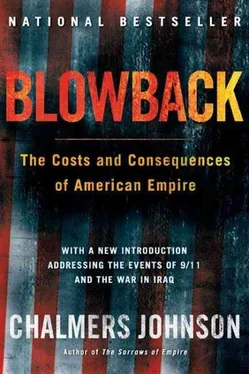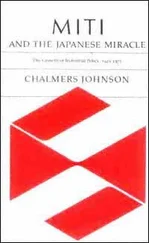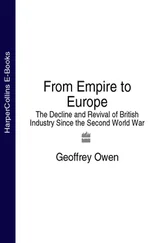Chalmers Johnson - Blowback, Second Edition - The Costs and Consequences of American Empire
Здесь есть возможность читать онлайн «Chalmers Johnson - Blowback, Second Edition - The Costs and Consequences of American Empire» весь текст электронной книги совершенно бесплатно (целиком полную версию без сокращений). В некоторых случаях можно слушать аудио, скачать через торрент в формате fb2 и присутствует краткое содержание. Год выпуска: 0101, ISBN: 0101, Издательство: Macmillan, Жанр: Старинная литература, на английском языке. Описание произведения, (предисловие) а так же отзывы посетителей доступны на портале библиотеки ЛибКат.
- Название:Blowback, Second Edition: The Costs and Consequences of American Empire
- Автор:
- Издательство:Macmillan
- Жанр:
- Год:0101
- ISBN:9780805075595
- Рейтинг книги:5 / 5. Голосов: 1
-
Избранное:Добавить в избранное
- Отзывы:
-
Ваша оценка:
- 100
- 1
- 2
- 3
- 4
- 5
Blowback, Second Edition: The Costs and Consequences of American Empire: краткое содержание, описание и аннотация
Предлагаем к чтению аннотацию, описание, краткое содержание или предисловие (зависит от того, что написал сам автор книги «Blowback, Second Edition: The Costs and Consequences of American Empire»). Если вы не нашли необходимую информацию о книге — напишите в комментариях, мы постараемся отыскать её.
Blowback, Second Edition: The Costs and Consequences of American Empire — читать онлайн бесплатно полную книгу (весь текст) целиком
Ниже представлен текст книги, разбитый по страницам. Система сохранения места последней прочитанной страницы, позволяет с удобством читать онлайн бесплатно книгу «Blowback, Second Edition: The Costs and Consequences of American Empire», без необходимости каждый раз заново искать на чём Вы остановились. Поставьте закладку, и сможете в любой момент перейти на страницу, на которой закончили чтение.
Интервал:
Закладка:
During a year of China-watching (as it was then called) from Hong Kong, I began to have inklings of the Cultural Revolution to come, and in 1966, I wrote a long piece on how China’s People’s Liberation Army was being transformed into the personal political instrument of Mao Zedong. 3As we would later learn, Mao was indeed in the process of allying himself with the army—in order to attack the Communist Party itself, the very organization he had begun building into a mass movement in those years of Japanese occupation. But none of us studying China then came close to imagining what the Cultural Revolution would be like or what kind of a disaster it would become, all because Mao Zedong wanted revenge on some of his fellow revolutionaries. Before the savagery ended with Mao’s death in 1976, the so-called Cultural Revolution came to resemble Stalin’s purges of the late 1930s. It destroyed the last shreds of Chinese idealism about the promise of communism.
The Cultural Revolution isolated China from the First, Second, and Third Worlds. It became a pariah state, unable even to forge a united front with the Soviet Union to support the Vietnamese Communists. China and Russia came perilously close to war. The only stable person left among the top Chinese leadership, Premier Zhou Enlai, sought to avoid a preemptive Soviet strike against China’s fledgling nuclear weapons program by opening relations with the devil himself—the United States. President Nixon and his national security adviser, Henry Kissinger, jumped at the opportunity, and Sino-American rapprochement unfolded—against a backdrop of the war in Vietnam, Watergate, and China’s purge of anyone not totally committed to the cult of Mao. Nixon’s visit to China in 1972 renewed popular interest in an etherealized China of acupuncture, the Great Wall, ancient cultural artifacts, and pandas—just as the real land was being run into the ground by its most despicable twentieth-century regime.
Like other foreign specialists in Chinese politics, I was active in trying to understand what was going on, writing papers and attending conferences where Chinese matters were discussed. In 1967, at age thirty-six, I was appointed chairman of Berkeley’s Center for Chinese Studies. Perhaps the most important action I took in my five years at the center was to hire, as our librarian, John Service, one of America’s great State Department China hands of the 1940s, who had been savaged by Senator Joseph McCarthy and whose career in the Foreign Service had been ruined. When, after Kissinger’s initial visit, Zhou Enlai told American reporters that Service was one of only three Americans the Chinese would welcome back (the other two were Professors John Fairbank and Owen Lattimore), we at the center hastily helped arrange for his trip. I can vividly remember him calling me on the day in July 1971 when it was announced that President Nixon had accepted an invitation from Mao Zedong to visit China. As much as he hated Nixon, he told me, he had to give him credit as virtually the only conceivable president who could have brought off such a breakthrough.
American university campuses in the late sixties and early seventies were not ideal places for anyone who doubted that Mao Zedong was a true scourge of bureaucracy or who questioned whether there was any wisdom at all in his “Little Red Book” of sayings. Campus Maoism was everywhere, fueled by the general euphoria over China that Nixon and Kissinger had unleashed. (Let us not forget that even seasoned journalists like James Reston and Harrison Salisbury of the New York Times went a little gaga over the China they thought they saw.)
It was clear to me, however, that the Chinese “revolution” had degenerated into a Herodian horror show, destructive to the lives of all honest Chinese—fascinating to monitor, perhaps, but no longer of great significance to the global balance of power. In Japan, on the other hand, something interesting was going on to which no one in America seemed to be paying serious attention. In the summer of 1972, I returned to a Japan well on its way toward becoming the most advanced industrial nation on earth. The contrast with my earliest naval experiences there or with the Japan of 1961, when my wife and I had set up a household in a Tokyo suburb, was stark indeed. Japan’s economic “miracle” (a term used by Westerners to denote something attractive but from their point of view unexpected) was everywhere becoming obvious. Its economy had been growing for fifteen years at an annual rate of around 10 percent, and the results were starting to come in. Japan was producing a line of automobiles that American and East Asian consumers were beginning to buy in large numbers, thanks to their low price, reliability, fuel efficiency, built-in air-conditioning, and compact size. In design, its cameras, consumer electronics, and ships, among many other products, rivaled in simplicity and elegance the traditional designs of its houses and ceramics.
To a China specialist disillusioned by the savageries of the Cultural Revolution, Japan looked like a unique case of successful socialism in one country. A state bureaucracy guided the economy, setting social goals but avoiding the misallocation of resources, loss of incentives, and extreme rigidity that were hallmark features of the Soviet and Chinese economies. How had it done this? Americans were largely uninterested in answering such a question, even though Japan’s trade surpluses were starting to irritate their government. Americans were not even curious about the new institutional structures that Japan had forged to engineer high-speed economic growth, structures that would prevent any quick or easy solution to the trade imbalance. We still saw Japan as a “little brother,” learning from and emulating its postwar mentor. The idea that Japan could be experimenting with a different form of capitalism was, if even imaginable, certainly heresy. That they were beating us in manufacturing and marketing certain major products had to mean they were cheating.
Americans defined Japan as a democracy organized around a free-market economy, just as the United States itself was said to be. In his memoirs, Edwin O. Reischauer—the best-known American specialist on Japanese history and ambassador to Japan during the 1960s, at the height of that country’s “income-doubling plan”—hardly bothered to mention the economy. The truly amazing thing about such American myopia and condescension was that it would last well into the late 1990s, when it would suddenly turn into contempt for Japan precisely because it had a different kind of capitalism.
In the summer of 1972, one of my mentors and a preeminent political scientist, Professor Junnosuke Masumi, urged me to consider the then-emerging economic miracle. American scholars like me, he pointed out, tended to focus on left-wing and protest politics in Japan; virtually none of us had devoted any attention to its ruling elites. There were only a few studies in English of the Liberal Democratic Party, which had been continuously in power since the country had regained its independence in 1952, and nothing at all on the vast bureaucratic state apparatus that supported and guided the economy in much the same way the Department of Defense supported and guided the military-industrial-university complex in the United States.
We talked specifically about the Ministry of International Trade and Industry (MITI). Among knowledgeable Japanese in the Tokyo of that moment, it was the openly acknowledged author of the economic miracle. Much as Professor Levenson had suggested that I look into Japanese-occupied China to find the roots of the Chinese Communist Party’s success, so Professor Masumi suggested that I look into the roots of MITI to find the basis for his country’s “successful socialism.” I spent the next decade on this project, writing a history of an economic ministry that I thought might interest a few public policy specialists who did not read Japanese, as well as the usual group of Japanologists. I did not realize then that my research would inadvertently lead me to see clearly for the first time the shape of the empire that I had so long uncritically supported.
Читать дальшеИнтервал:
Закладка:
Похожие книги на «Blowback, Second Edition: The Costs and Consequences of American Empire»
Представляем Вашему вниманию похожие книги на «Blowback, Second Edition: The Costs and Consequences of American Empire» списком для выбора. Мы отобрали схожую по названию и смыслу литературу в надежде предоставить читателям больше вариантов отыскать новые, интересные, ещё непрочитанные произведения.
Обсуждение, отзывы о книге «Blowback, Second Edition: The Costs and Consequences of American Empire» и просто собственные мнения читателей. Оставьте ваши комментарии, напишите, что Вы думаете о произведении, его смысле или главных героях. Укажите что конкретно понравилось, а что нет, и почему Вы так считаете.










